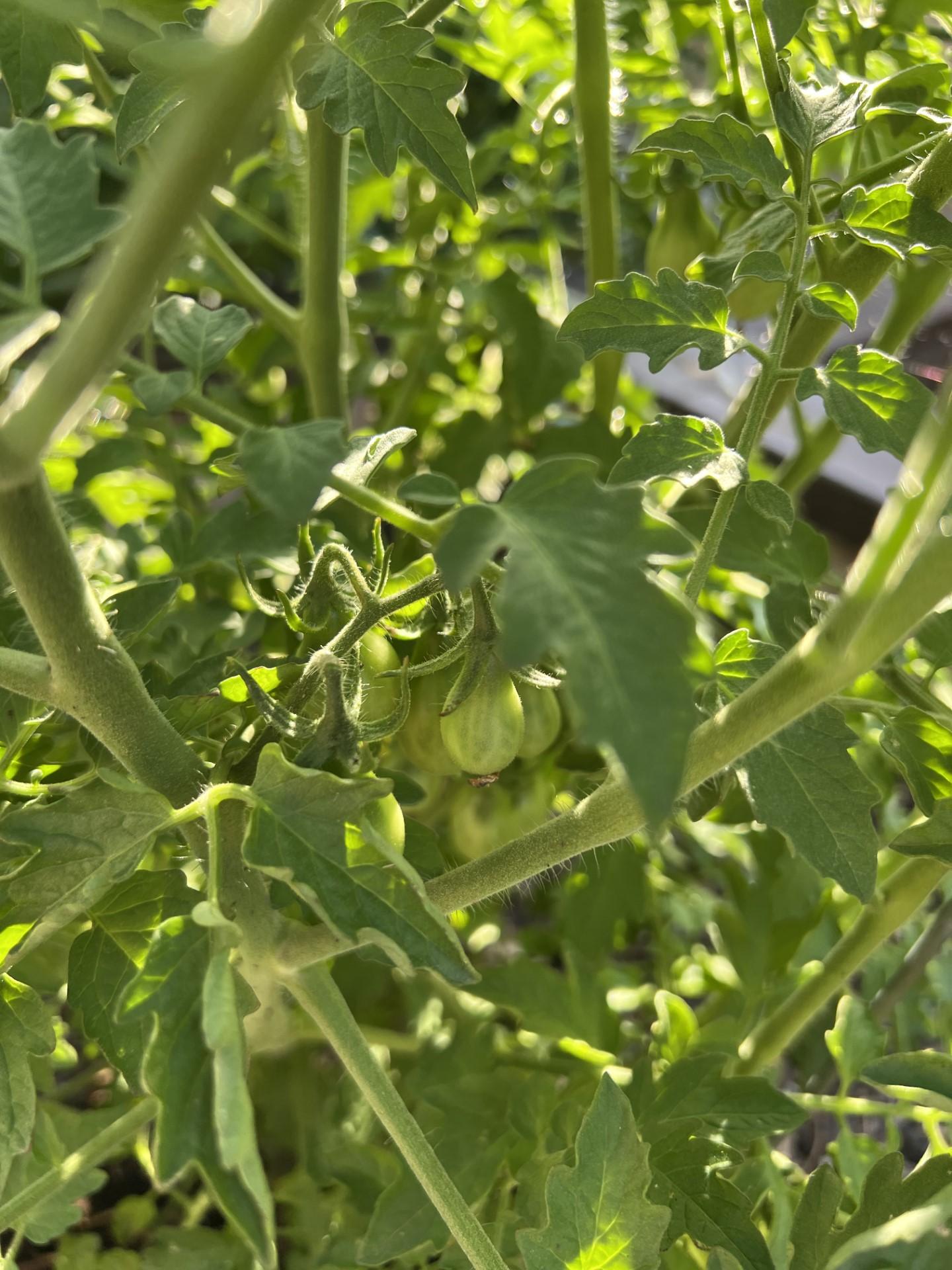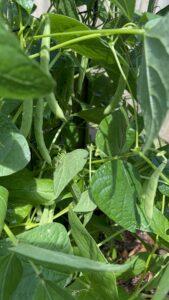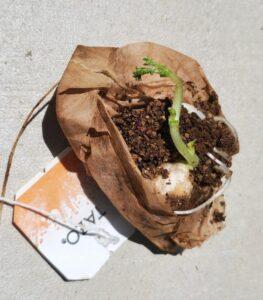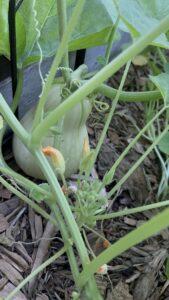Growing healthy vegetables to support your plant based lifestyle

Kitchen Chronicles
The journey to a plant-based lifestyle can be exciting and fun! To elevate this experience, why not consider growing your own foods. Growing your own vegetables and fruits can have so many health benefits and provide a platform for learning opportunities and wholesome practices on how to optimize your nutrition, save money, reduce the use of harmful pesticides and fertilizers, and becoming gentler on the environment by reducing carbon emissions. I must confess that gardening is one of the things that sparks joy for me. It is very rewarding to plant a seed, watch it grow and 8 to 12 weeks later prepare and make a meal from the fruits that have been harvested.
To be a successful gardener doesn’t require a huge plot of land in your back or side yard, nor does it require fancy equipment. All you need are a few pots, jars and growing bags, rich healthy soil, a bright sunny spot on the outside, a variety of seeds and seedlings to plant, good gardening tools and a can-do attitude that will help your garden grow and flourish!

When choosing containers to plant in, pay close attention to the size and the materials that they are made of. The size of the containers used will be determined by the designated gardening space and they also dictate how big or small your plants will grow. Consider using pots that have a minimum diameter of 18 inches and no less than 18 inches deep or with a capacity of 5 gallons in total volume. The material choices for the containers are equally as important as they influence how much moisture is retained in the soil and influences the aesthetic element of your gardening space.
Plastic and fabric containers rank high on the list for materials that should be used in a home garden, since they do an excellent job of retaining moisture, thus promoting healthy root systems, they are easy to work with, being lightweight and easy to move around. Also, they can last a long time.

The soil type for your garden plays a vital role in how bountiful your harvest can be. It provides a support system for the plants and their roots, it gives fruits and vegetable seedlings the necessary nutrients, and minerals needed to grow, produce flower, seeds, and fruits, it regulates and purifies the water and air supply to the plants, and it provides a habitat for organisms that are beneficial to the health and well-being of the plants. I have found that the best soil for my vegetable garden is a 50/50 mixture of organic potting soil and organic gardening soil with elements of homemade compost included. Minerals and nutrients from this soil mix typically last an entire growing season. When the next growing season rolls around, I top up on my 50/50 soil mixture and load it up with a large amount of compost!
Location, location, location is everything! Choosing a garden’s location is critical to its health and success in producing fruit. Since plants are not mobile, it’s important to consider the natural benefits of your garden’s location of choice. One of the most important factors when considering garden location is sunlight exposure. In order to thrive, most fruit trees and vegetables require at least 6-8 hours of unobstructed sunlight per day. The sun provides plants with the energy needed to grow. Choose a sunny spot so your veggies can flourish.
Water accessibility is another factor to consider. Ensure that water is readily available near your gardening site so that it doesn’t become a burden watering your garden. You will less likely skip watering sessions and increase the likelihood of your garden flourishing.
Wind protection is a key factor to consider when thinking about a garden’s location. Having substantial shelter from heavy winds is critical, especially for crops that grow upright and produce large amounts of fruits, such as tomatoes, peppers, eggplants, peas, beans, and other climbing vegetables. Being exposed to strong winds can quickly dry out the soil, causing plants to topple over. The winds also suck moisture from the plant themselves, causing wind burns that destroy leaves and flowers.
Now that we have chosen our containers and the perfect spot for our garden let’s look at the fruits and vegetable options that will be best suited for a garden. There is a large variety of fruits and vegetables that will thrive in whatever garden you put them in and take up minimal space. When considering what to plant, choose fruits and vegetables that will give the biggest bang on nutritional content and reduce your dietary deficiencies.
Broccoli ranks high on the list as it is high in antioxidants, fiber, calcium, vitamins A and C. Broccoli needs rich fertile soil that is high in nitrogen.
Kale and spinach are green leafy vegetables that are nutrient dense. They are both high in fiber and vitamins, Kale is rich in vitamin C, omega-3 and 6 fatty acids and antioxidants. Spinach is a great source of vitamin K, A and folate. Both vegetables do best when sown in cooler weather and harvested when young.

Garlic and onions are known immune system boosters rich in vitamins B1, B6, Manganese and calcium. They also enhance the flavour of just about any meal. In my kitchen they are staples in just about every savory meal I prepare. Both the bulbs and the leaves are edible which makes this duo a must on vegetables to include in your garden. Garlic and onions do best when they are planted in nutrient rich soil in the cooler months.
Bell peppers are a vitamin C powerhouse boasting three times more vitamin C than most citrus fruits. They are also rich in vitamin A and antioxidants and most nutrient dense when allowed to develop their orange and red colors. Bell peppers do best when grown in cooler areas where there is partial shade.
Squashes such as zucchini and yellow squash are beneficial for a healthy heart and boost the immune system. They are excellent sources of vitamins A and C. Squashes are very versatile and can be a low-carb substitute for pasta. They thrive in cooler climates with lots of sun and water. Harvesting squashes when they are about four inches long promotes the production of more fruits.
Beans and legumes are good sources of proteins and fibers, with darker beans having high levels of antioxidants. Legumes go best in soups and stews to add substance to plant-based meals. I love growing a variety of legumes as they provide bountiful harvests. To speed up the initial growth of legumes, soak dried beans in water overnight before they are sown. Water seedlings generously and ensure that there is ample sturdy support for the vines as the plants grow. Legumes are generally ready to harvest when the pods turn yellow, unless the goal is to intentionally harvest them when they are green.
Tomatoes are very popular in home gardens given how quickly they grow and produce fruit. They are excellent sources of vitamins A, C and E and high in potassium and flavonoids. Tomatoes are used in a variety of stews and braised meals and is the key ingredient in marinades and sauces for pasta dishes. When growing tomatoes consider positioning them in full sun and water them generously. Tomatoes are prone to pests such as the hornworm caterpillars which can do substantial damage very quickly. Check tomato plants frequently for these hungry pests and pick them off when you see them. Spraying plant foliage with a mixture of liquid dish soap and water, then sprinkling with cayenne pepper will help to repel and reduce visits from these pesky pests.
Blueberries and blackberries are a great source of zinc, copper, vitamin C, antioxidants, and iron. The are excellent ingredients for desserts, smoothies, and juices. These plants love to be in the full sun and do best in acidic soil. Blueberries and blackberries are very hardy and can withstand the harshness of most cold winters.
Strawberries are considered one of the easiest fruits to grow. They are rich in vitamins C, B2, B5, B6, K, essential fibers, and micronutrients such as magnesium and copper. Strawberries grow best with lots of sun and well drained soil. They are hardy plants and tend to run. When planting strawberries, consider planting in an area where there is some room for the plant to run and for berries to be off the ground.
Growing fruits and vegetables at home can bring an exciting element to your plant-based journey. Armed with the knowledge, the right tools and a positive attitude you have everything you need to have a flourishing garden this growing season.
Dr. Jerainne Johnson-Heywood is a Physical Chemist, home chef, culinary influencer, and a food enthusiast, focused on creating plant-based cuisines! Her culinary brand is The Uncomplicated Palate.






